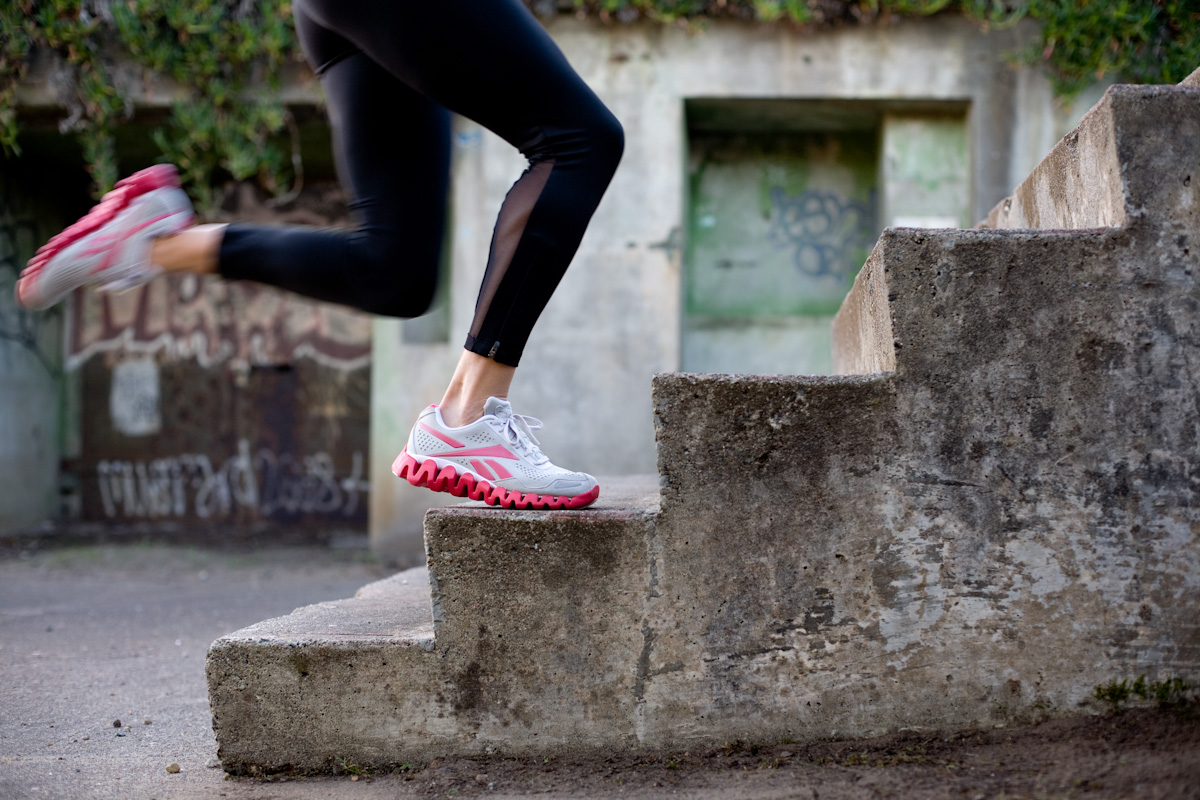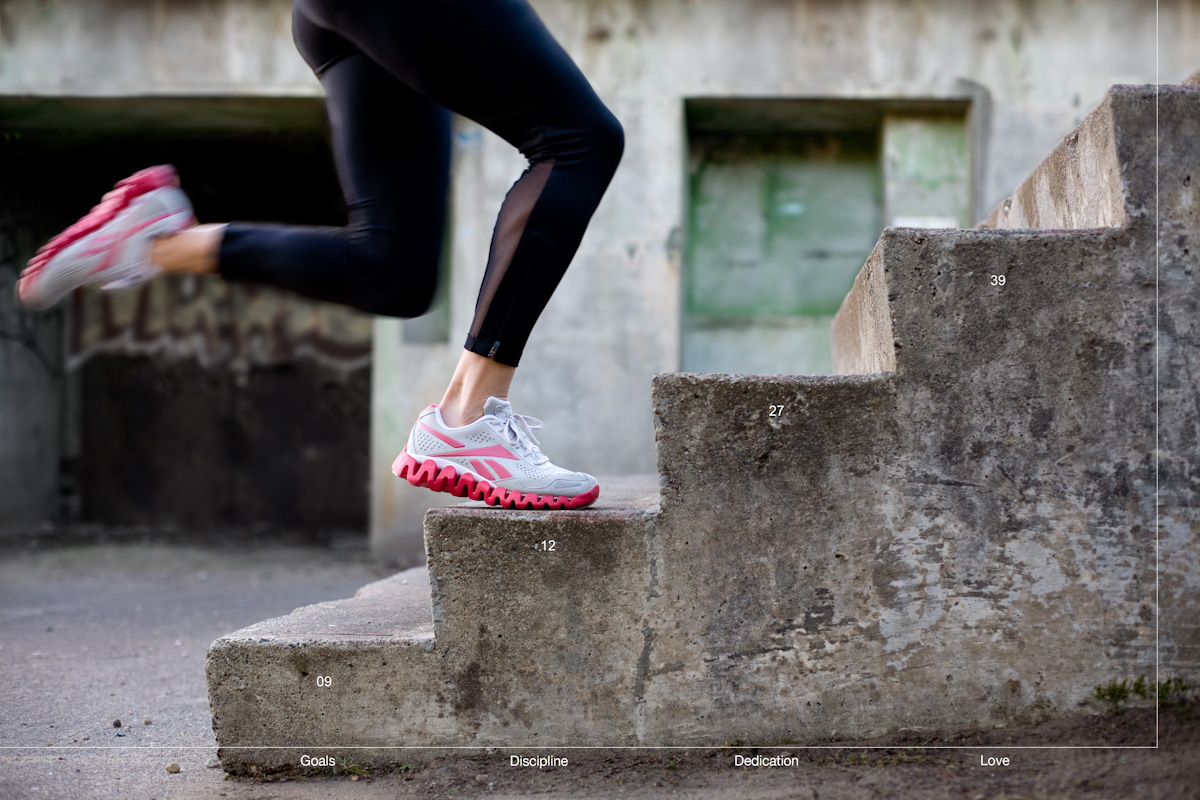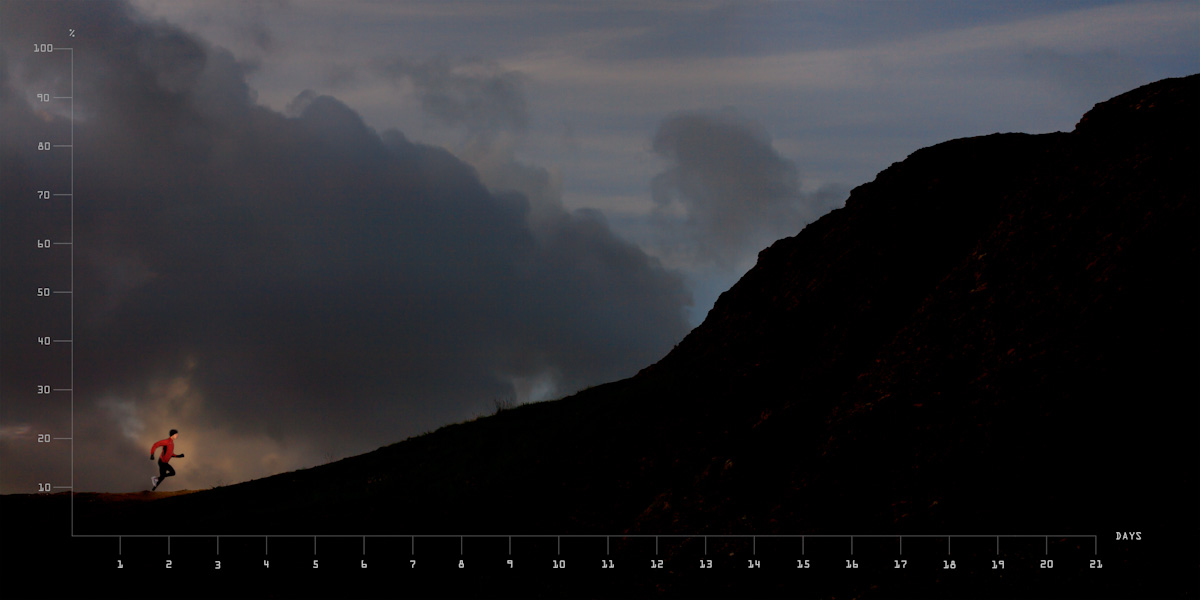



Took a step outside to do some more running shots.... I wanted to create charts in landscapes, to suggest performance improvement, challenge, increasing difficulty, that kind of thing. So far, people are having a hard time seeing the charts, so I s'pose I should be glad I didn't get to the Venn diagram.
Had superb weather out at Battery Alexander. It was hard to find stairs I liked, without a railing, going in the right direction, but Ron found them. I loved the gritty feel as well.
We had to delay the Bernal Hill shoot one day, because of rain. But the following day was a major show with all the fast-moving clouds. This black hill shot fairly heavily photoshopped, as I didn't get a figure/clouds combination that I truly liked, but all these other shots are not too different from the way I shot them.
And now...with actual people. I figured since I was at these lovely places with these great models I ought to get some pickup stuff. I felt totally out of my element, so that was good.
It feels pretty strange to work with available light. I wanted to just be loose, not even use fill. It's certainly uncomplicated, but of course you're limited in the things you can do. It was kind of nice, but I don't know if I want to make a career out of it. I actually prefer adjusting lighting obsessively.
I used strobe on these shots, and didn't worry too much about things looking natural. It's not really my milieu, after all. Natural, I mean.
Big thanks to models Sarah Hallas, Erich Wegscheider, assistants Jamey Thomas, Karl Nielsen, and location scout Ron Ison.
I appear to have hit my self-promotion stride, on this go round anyway. Since email's dead* as a self-promotion tool, I needed to do something different. I decided to build my own three-fold mailer, using the "Make Shoes Move" demo campaign that Adam Weisman and Brad Soulas built around my running shoes photographs.
Using Adbase, I built a short list of companies and agencies that have something to do with athletic shoes, and rounded that out with a few reps I've been promoting to, for a total of about 40.
I used Moab Lasal doublesided, the same paper I'll be using in my new portfolio.
After finally surmounting some bizarre mental block, I managed to figure out how to insert the paper to get the proper orientation.
I printed these on my Epson, so the print quality is stunning, but inkjet prints scratch real easily, so I ordered some glassine envelopes. I've also heard that buyers would rather not have to open something before they decide to bin it, so the transparency's polite.
I included my new tag line, "Making good ideas beautiful, and bad ideas interesting", as well as the concepts for the iPhone apps.
I included a personal note with each promo seemed like a good idea. Took forever though, with this many promos.
Although email's dead, I still sent an email promo for the project, just to a much broader audience. Both the mailer and the email point to the Minisite I put together.
So, I sent the mailer, waited about a week, and sent the email. The following morning, I started calling all the people to whom I'd sent the mailer. I have been alarmingly bad at calls such as these, but this time around, it went really well.
It helps that:
I got a lot of good feedback from the people I actually got to talk to, and a nice email back from one of the reps. Overall, I made 8 solid contacts, a response of 24% of the calls I made, and 18% of the mailers. Even the email did alright: I got a 14% clickthrough on that.
*Everybody's saying so. Plus, Adbase indicates whether the buyer wishes to receive email promos or not, and anecdotally, I now regularly see the entire staff of a company set to "does not wish to receive". More reliably, when I output a list, half of the buyers don't want email, where it used to be like 15%.
Track spikes have always fascinated me. They're so singular in purpose. Maybe that's why the designers go nuts, but it's hard to find a wallflower track spike.
The Asics Japan Lite-Ning 2 is no wallflower. For this shoe I wanted a stadium backdrop. I scouted various tracks: Stanford, Kezar, USF, SFSU, and City College was the best. They recently built themselves a new complex, with a track, a football field, a stadium, and a fitness center. It's really nice and really new.
Trying to get permission to shoot, I was getting nowhere talking to them on the phone, so I hopped on down there with my portfolio and my enthusiasm and had permission in short order (thanks Martha and Dan!).
Meanwhile, I planned my lighting setup at home.
Later that week, Emily Polar, Kim Olson, and I overloaded Emily's Subaru with gear. We set up the shoes on the track...
...and built a crazy looking lighting setup all around it, had a nice dinner, and waited for the ambient light to be right.
I think the obvious question here is why? Why not just shoot the background, then shoot the shoes, then composite. Especially since I've gone with this very dramatic, unrealistic lighting.
And the answer is: it just doesn't look right composited. It may look cool, compelling, interesting, flashy, or, these days, totally-run-of-the-mill, but it doesn't look right. Although I almost totally overpowered the ambient light on the shoes, there is still some ambient there. Also, there's an interaction with the edges of the shoes and the background that would take God-like knowledge to even know you'd need to replicate it.
Finally, there's the interaction between the object and the place and the crew and the day. And this is all-important and this cannot be faked.
Lately I've been hating Photoshop...working in it, as well as looking at the results. There's so much bad compositing in the world, and even the good compositing is starting to look stale. Of course, compositing probably won't go away, and done well, it's compelling, particularly allowing depiction of something that's otherwise not possible (physically, not financially). It's pushed me to wonder if there's another way. And of course, there is! The way people did it in the old days. Five years ago. Furthermore, I've been interested in doing the same kind of lighting, in the field, as I do in the studio. Of course this complicates things. In addition to the ordinary studio variables, add changing ambient light, wind, dust, passersby, permits, uneven surfaces, etc.

The thing that killed us on this one was hauling 200 pounds of gear 20 minutes up the trail. Much thanks to two local heroes - Clint and Michael, my assistants who schlepped gear, prevented a pair of dogs from running through the set, held flags, and were otherwise great.